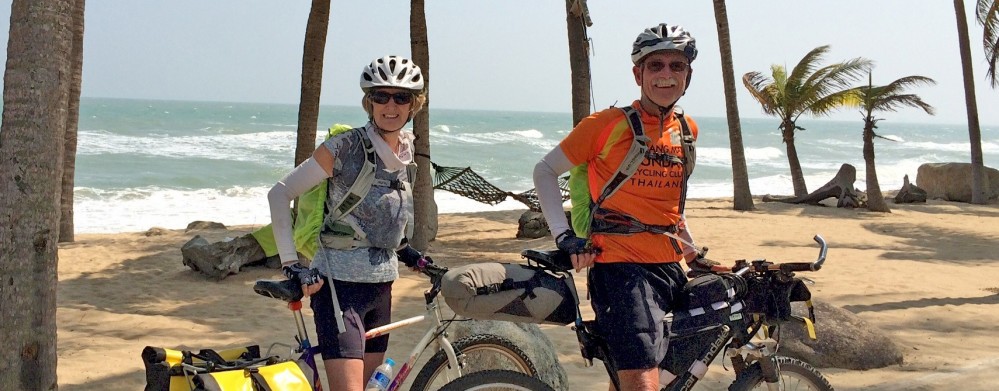Moving a little too quickly lately, which hasn’t left much time for blogging. It was pointed out to us last week that we’re never completely offline or out of touch, but last week was an exception.
One of our favorite rivers is the San Juan River just southwest of Durango by 3 hours. We used to run the San Juan every Memorial Day for years, with all our local rafting friends. The habit was broken once we got hooked on sailing. The main motivation for rafting in those days was to get away from the hospital and the telephone. It’s still possible to get out of touch when you go down a river, in fact the next two weeks on the Colorado thru the Grand Canyon will pose the same disconnect.
 Float trips provide some of the best relaxation we can recommend. Of course there are moments of effort in the rapids but the San Juan has very few. However there is one other drawback: In low water you have to pay attention to flow or you end up pushing the boat thru the shallowest sections. We only got out to push a couple of times when we weren’t paying attention.
Float trips provide some of the best relaxation we can recommend. Of course there are moments of effort in the rapids but the San Juan has very few. However there is one other drawback: In low water you have to pay attention to flow or you end up pushing the boat thru the shallowest sections. We only got out to push a couple of times when we weren’t paying attention.
 This trip was a very small group: eight folks in 3 rafts, a canoe and an inflatable kayak. All folks we’ve rafted with previously.
This trip was a very small group: eight folks in 3 rafts, a canoe and an inflatable kayak. All folks we’ve rafted with previously.
It’s very hard to win a lottery slot on the San Juan River these days. Fortunately Bill Atkins snagged a cancellation in late March for this time slot, allowing all of us to join him.


Weather was cooler, with a little rain but not enough to dampen the camaraderie. As always, the meals were superb with BBQ’d Teriyaki Chicken, Southwestern Beef Burritos and Tacos, Shrimp Panang Curry and Green Chili Chicken Stew, to name a few. Rafting is the opposite of UltraLight camping as we literally bring the 3-tub kitchen sink for washing.

Stanna cooked her Panang specialty with shrimp in a wok and we even managed a French Bakery Cheesecake for dessert one night.
Almost forgot to mention one of our favorite hikes on the San Juan is up Slickhorn Canyon thru the cascading pools of water.
Now it’s time to leave again for the Grand Canyon. Should have some photos from that adventure coming up.










 It’s been odd hanging out into winter, having to don all that winter clothing and extra layers. Like the Christmas decorations stored since 2000, it’s nice to bring that stuff out of the deepest parts of the closets. Good thing all that gear still fits.
It’s been odd hanging out into winter, having to don all that winter clothing and extra layers. Like the Christmas decorations stored since 2000, it’s nice to bring that stuff out of the deepest parts of the closets. Good thing all that gear still fits.



 The coup d’ grace for the week’s activities was a half-day dog sled ride on the west side of the La Plata mountains. We arranged for 3 sleds, each with teams of eight Alaskan Huskie sled dogs and their mushers. The “Swiss Calendar Day” was picture-perfect as we whisked along at 6-8 miles an hour, stopping occasionally to let the dogs catch their breath.
The coup d’ grace for the week’s activities was a half-day dog sled ride on the west side of the La Plata mountains. We arranged for 3 sleds, each with teams of eight Alaskan Huskie sled dogs and their mushers. The “Swiss Calendar Day” was picture-perfect as we whisked along at 6-8 miles an hour, stopping occasionally to let the dogs catch their breath.






 area 24 miles up the highway, and another 8″ in Durango. Both our snowmen sit and still stand tall on the condo deck, surely surviving into the new year.
area 24 miles up the highway, and another 8″ in Durango. Both our snowmen sit and still stand tall on the condo deck, surely surviving into the new year.


 40′ log resting on linear pillars of yet-to-erode sand. Will our trees become just another layer of geologic history? Undoubtedly so.
40′ log resting on linear pillars of yet-to-erode sand. Will our trees become just another layer of geologic history? Undoubtedly so.



















































 These local projects were stimulated after a local non-profit sponsored a Solarize effort which reached it’s goal of over 100 installations done last Spring. Local contractors participated in a fixed-price program and successfully increased our county’s renewable energy number by at least 25%. The barn raising version has followed with homeowners collectively working to install their own, friends’ and neighbor’s solar arrays on roofs, garages and free-standing installations. I’ve helped on 4 of the 36 so far of these, and have a pretty good understanding of what’s involved and would highly recommend taking on the venture.
These local projects were stimulated after a local non-profit sponsored a Solarize effort which reached it’s goal of over 100 installations done last Spring. Local contractors participated in a fixed-price program and successfully increased our county’s renewable energy number by at least 25%. The barn raising version has followed with homeowners collectively working to install their own, friends’ and neighbor’s solar arrays on roofs, garages and free-standing installations. I’ve helped on 4 of the 36 so far of these, and have a pretty good understanding of what’s involved and would highly recommend taking on the venture.





